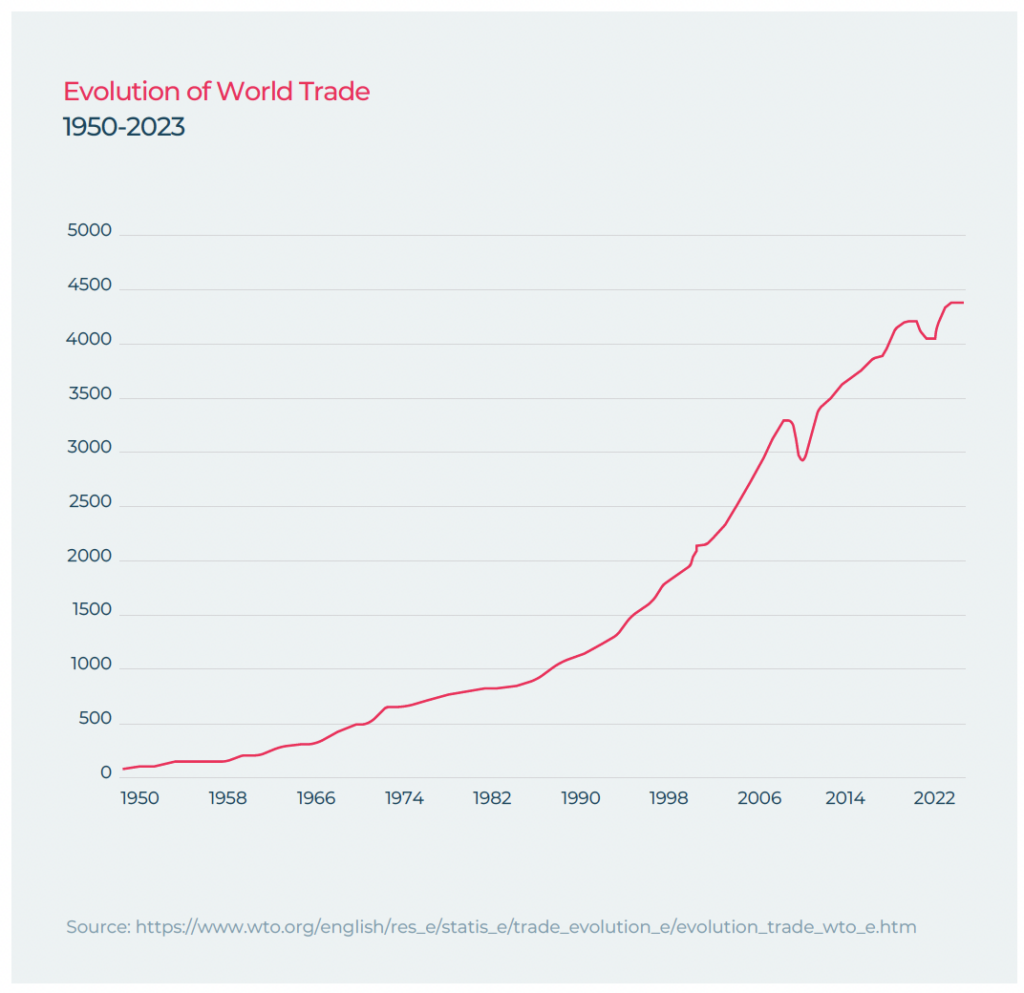Editor’s Note: The following is an excerpt of a research report published recently, “Navigating Tomorrow 2025 – The Transportation Management Agenda: Innovate or Execute Better?” The research, conducted by Adelante SCM and commissioned by Alpega, highlights important trends that are top of mind for logistics executives heading into the new year and explores whether focusing on innovation or executing better is the best approach to address the challenges and opportunities that lie ahead. The report includes data and insights from interviews conducted with industry executives from Logista Freight and Ernst & Young, and from executives from Indago’s supply chain research community and Alpega’s customer community. Please visit the report page for more information about the research and to download the full report.
“The more things change, the more they stay the same.”
The 19th-century French writer and critic Jean-Baptiste Alphonse Karr wrote that line (in French, of course) in 1849. He was referring to society in general, but he might as well been talking about transportation management.
Over the past 45 years, there has been tremendous change in the transportation realm. Consider, for example, the explosive growth in global trade. As the chart below from the World Trade Organization shows, world trade volume is more than 5X greater today than in 1980 (and world trade value has increased more than 10X over the same time period).

There are many factors contributing to this growth, such as the formation of the European Union; the adoption of regional and global trade agreements; China becoming a member of the World Trade Organization; the growth of global procurement and manufacturing outsourcing; and the rise of e-commerce.
This has translated into increased shipping volumes across all modes of transportation — trucking, parcel, rail, ocean, and air — and the globalization of transportation operations. As a result, this has required companies to become more proficient in planning, optimizing, executing, and tracking multimodal, cross-border shipments.
These trends led to the development of transportation management systems (TMS), which early adopters (both shippers and carriers) started implementing in the 1980s. Over the past 40 years, TMS solutions have evolved from standalone applications running on desktop computers to today’s single instance, multi-tenant solutions running in the cloud. Today’s TMS solutions also provide broader and more sophisticated capabilities than earlier versions, such as Artificial Intelligence (AI) and predictive analytics.
Despite all this change, however, certain things have remained the same.
That is, a lot of waste and inefficiencies still exist in the industry. For example, consider the problem of empty miles (aka “empty running”) in trucking. According to Eurostat, more than one fifth (21.8%) of total road freight vehicle-kilometres were carried out by empty vehicles in 2023. The percentage was higher for national transport (25%) compared to international road transport (13.1%).
Compare that to Eurostat data from 2008: As cited in a 2010 paper published by The European Automobile Manufacturers’ Association (ACEA), empty miles ranged between 12% and 37% for different countries that year.
Simply put, this problem has not improved much in at least 15 years — and it has been a problem for much longer.
Another symptom of waste and inefficiency is detention time (or waiting time) at shipper facilities and border crossings. In a September 2024 report published by The American Transportation Research Institute (ATRI), “truck drivers reported being detained in 39.3 percent of all stops [in 2023],” as reported by TheTrucker.com. “Truck drivers were detained between 117 and 209 hours per year, depending on the sector. In for-hire trucking alone, the total time lost to truck driver detention exceeded 135 million hours in 2023…As a result, the trucking industry lost $3.6 billion in direct expenses and $11.5 billion in lost productivity from driver detention in 2023.”
While similar statistics regarding detention time at shipper facilities are not available for the EU, this is certainly an issue on the continent too. In addition, shippers and carriers have to deal with long wait times at border crossings. In a resolution adopted in April 2024, “the European Parliament [called] for EU action to address the long waiting times for heavy goods vehicles at EU borders.” According to the press issued by the Parliament, “various factors including insufficient technical capacity, staff shortages, and time-consuming checks on freight, hundreds of goods vehicles are held up every day at the EU’s internal borders, including the borders between Schengen and non-Schengen EU Member States, where vehicles face extremely long wait times and delays.”
Finally, despite the decades-long availability of transportation management systems, which have become easier and more affordable to implement thanks to cloud deployment and subscription-based pricing, many companies are still relying on manual processing and low-tech tools to manage their transportation operations. The net result is wasted time and inefficient use of labor.
As we enter 2025, we know one thing for sure: the transportation market will continue to change in the weeks and months ahead. But will companies change the way they manage their transportation operations or will they “stay the same” and resist change?
Also, considering all the trends impacting the industry, should companies focus their time, money, and resources on innovation in the coming year to achieve their objectives or should they focus more on just executing better with the systems and processes they already have? Put differently, which approach do you believe is more likely to deliver the best outcomes in transportation management at your company next year?
For insights on that question and more, based on a survey conducted with Indago’s supply chain research community, who are all supply chain and logistics executives from manufacturing, retail, and distribution companies, and members of Alpega’s customer community, please download the report.









